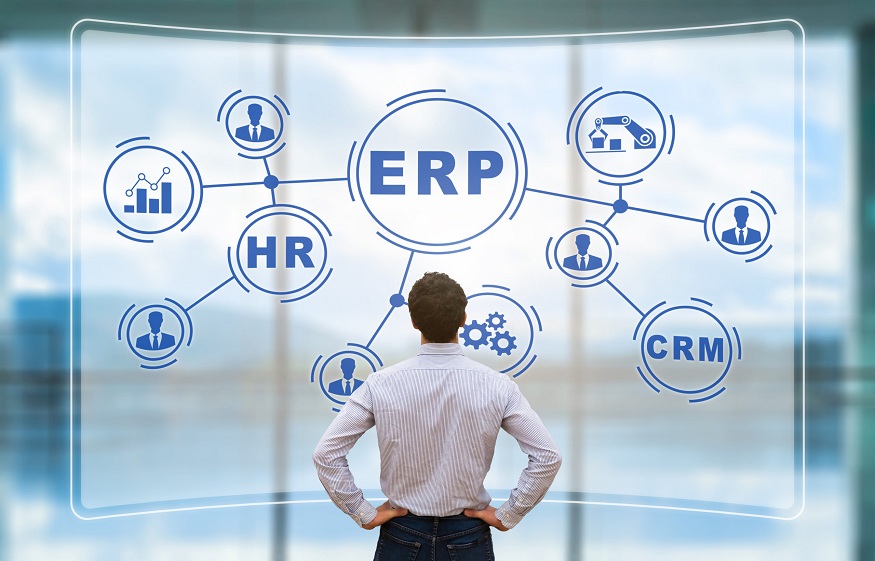The migration to integrated management software (ERP) is an important step for companies looking to improve their operational efficiency and obtain better visibility on their activity with its data. ERP software brings together all the criteria for managing a business in a single system, including accounting, finance, human resources, production management, purchasing, sales and inventory management.
Choose the right ERP software
But how to choose the right ERP for your company among the many software available on the market? Here are some steps to follow to choose the right ERP management software:
Assess your business needs : It’s important to understand your business management needs and determine what features you need in ERP software. This will allow you to target the software that best meets your needs for your business.
Research the available options: There are many different ERP software available on the market, each with their own unique features and benefits. It is important to research the different options available and compare them based on your business needs.
Consider the flexibility and customization of the solution: It is important to choose ERP software that can be adapted to your specific business needs. Make sure the software you choose can be customized to meet your unique management needs.
Check compatibility: Make sure the ERP software you choose is compatible with your existing IT system. This will save you additional costs to upgrade your computer system.
Evaluate costs: Costs are an important aspect to consider when selecting ERP software. Make sure you understand the upfront and recurring costs associated with using an ERP solution, such as licensing costs, set-up costs, and maintenance costs.
Evaluate support options and criteria: It is important to choose ERP software that offers quality technical support. Make sure the ERP software you choose has support options to help you resolve issues and get the most out of your software.
Important criteria to consider when choosing ERP software:
- Flexibility: Make sure the software can adapt to your unique business needs.
- Scalability: check that the software can evolve according to the growth of your business.
- Ease of use: check that the ERP software is easy to use for all users.
- Compatibility: Make sure the management software is compatible with your existing systems and processes.
- Security: Check that the software provides adequate security to protect your sensitive business-related data.
- Technical support: check that the software is accompanied by quality technical support to solve any problems.
- Customization: Check that the ERP software is customizable to fit your business needs and criteria.
- Costs: ompare the costs of different software to find the best one for your budget.
Choose the right ERP provider
Here are some steps to follow to choose the right ERP provider:
Choose the right ERP provider
Define your needs. Before you start looking for a supplier, it is important to define your ERP solution needs described above. Make a list of features and selection criteria that you want to include in your solution, such as finance, production, logistics, human resources management, etc. This will help you weed out vendors who cannot meet your needs.
Do a search. Once you have an idea of what you are looking for, search online to find ERP vendors that can meet your needs.
Ask for demonstrations. Once you have a list of potential vendors, request demos of their system. This will allow you to see how the system works in practice and to ensure that it meets your needs.
Evaluate the costs. Costs are an important factor to consider when choosing an ERP solution provider. Make sure you understand the costs of setting up, maintaining, updating, etc. and compare them to the costs of other suppliers.
Check references. Ask companies similar to yours who already use an ERP from this vendor, to find out how they adapted to the tool, how long it took and if they are satisfied with the results of their project.
By following these steps, you will be able to choose the right ERP provider for your business. It is important to take the time to think carefully about the management needs for your business.
The risks of an ERP project :
The implementation of an ERP (Enterprise Resource Planning) system is a complex project that can present many risks for companies. These risks can have significant consequences on the cost, quality and implementation time of the system. Here are some of the most common risks associated with an ERP project:
Underestimating costs: One of the most common risks associated with an ERP project is underestimating costs. The costs of setting up an ERP system can be significant, and it is important to assess them correctly to avoid surprises.
Underestimated deadlines: the implementation of an ERP system can take longer than expected, due in particular to the complexity of the system and the difficulties encountered during the implementation. It is therefore important to allow sufficient time for setting up the system.
Quality issues: Another common risk associated with an ERP project is the quality of the system. It is important to ensure that the system meets the needs of the business and that it is working properly before it goes into production.
Communication issues: The implementation of an ERP system involves many players, and it is important to maintain effective communication between them. Communication problems can lead to project delays and errors.
Risk of non-adoption: Another common risk associated with an ERP project is the non-adoption of the system by users. It is important to ensure that users are trained and understand how to use the system before it goes into production.
Security risk: ERP systems contain sensitive business information and it is important to ensure that it is protected against security threats. It is therefore important to put in place appropriate security measures to protect company data.
To avoid or minimize these risks, it is important to plan the project carefully, communicate effectively with the various actors involved, and ensure that users are trained and understand how to use the system. It is also important to select a qualified provider for the implementation of the system

